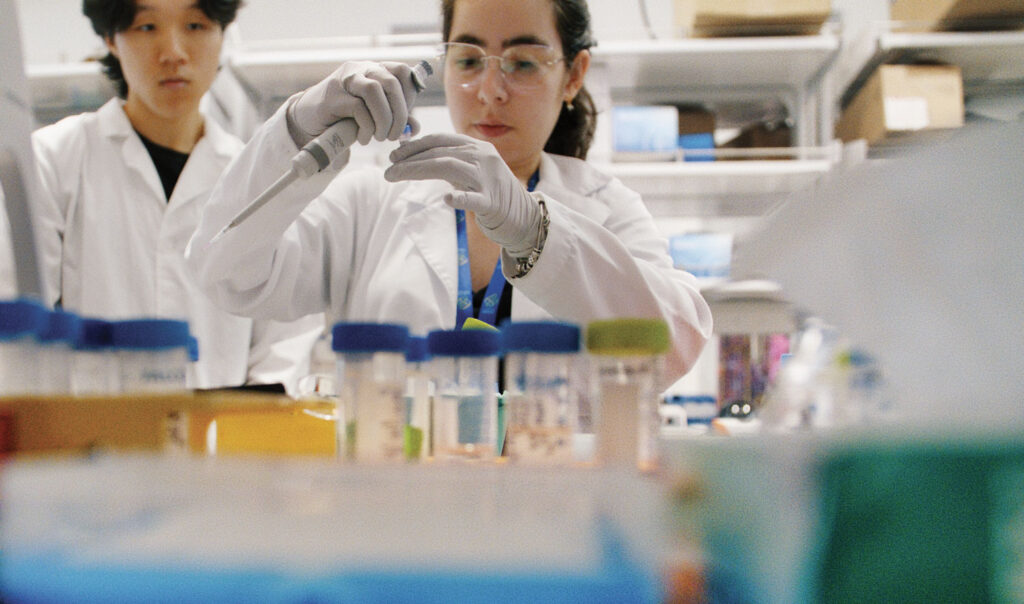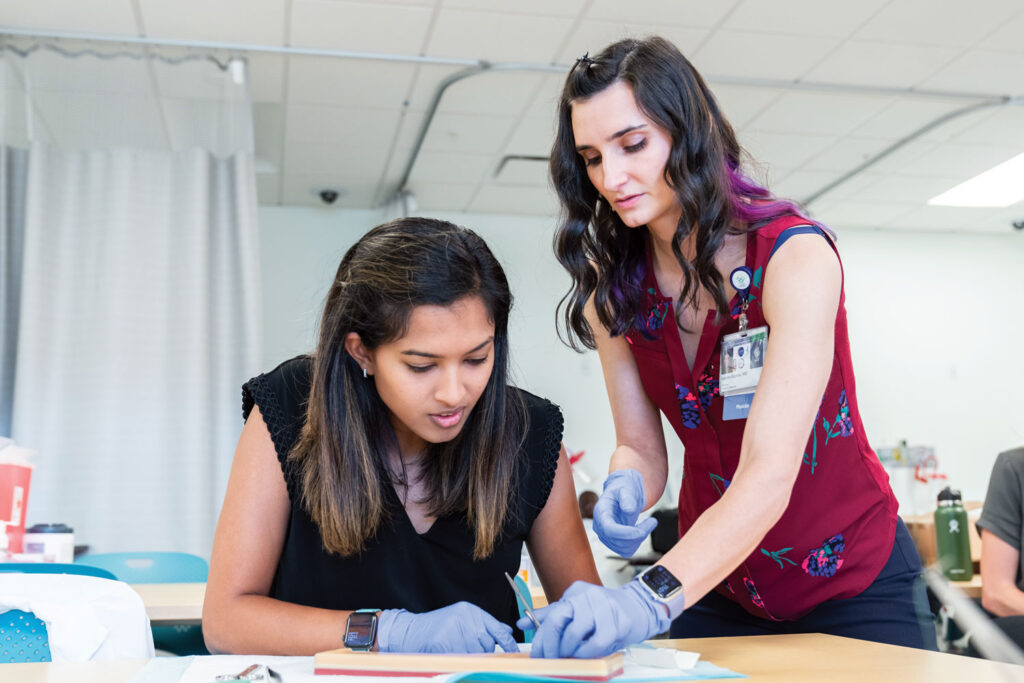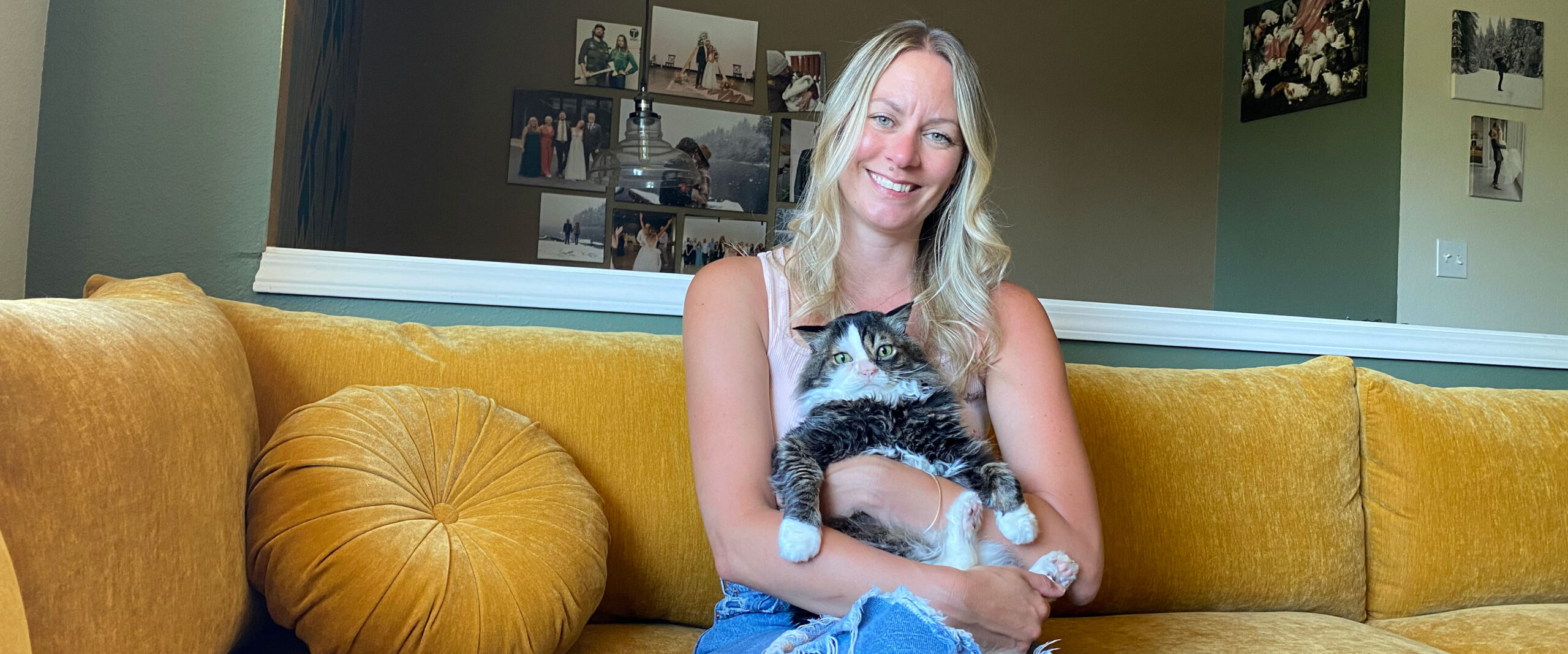OHSU charts a future of innovation, expansion, equity and workforce investments
Story by Wendy Lawton
Illustration by Aki Ruiz
For Ignite Magazine
The COVID-19 pandemic was the biggest test in OHSU’s 146-year history. Oregon’s only public academic health center persevered and, ultimately, triumphed.
Employees delivered more than 1 million COVID-19 vaccines — roughly a fifth of all doses in Oregon — including in historically underserved communities. Staff opened a COVID-19 testing lab in just two weeks, and continue to maintain an extensive webpage of COVID statistics for the public. And OHSU’s leaders transformed its clinical, research and education enterprises forever.
“COVID-19 made clear that OHSU is dedicated to its mission of supporting the health and well-being of the state of Oregon,” said OHSU President Danny Jacobs, M.D., M.P.H., FACS. “We proved we can save and improve lives by thinking creatively and acting courageously, even in the face of great hardship. COVID also made clear our path ahead, one where innovation and access lead the way.”
The pandemic brought together adversity and opportunity, suffering and comfort, in the crucible of crisis. COVID made clear what the university must lean into to make the region healthier, stronger and more just. Its lessons — about the imperatives of equity and collaboration, and the continuous need to invest in people and infrastructure — inform OHSU’s plans for future clinical care, research and education.

The vision for OHSU’s future is improving care by improving access: to hospital beds for patients; to health care education for learners; to making the best tests and treatments available to people of color, critically ill newborns, rural residents and other vulnerable people who make the Pacific Northwest home.
“The expansion is essential to our future — and to Oregon’s future, as well.”
John Hunter, M.D., FACS, Executive Vice President and Chief Executive Officer for OHSU Health
Discovery is also key to OHSU’s future. Whether it’s turning stem cells into retinas in a petri dish or reviewing hundreds of scientific studies to find out what works best in health care, OHSU plans big investments in path-clearing research to benefit patients all over the Pacific Northwest, the nation and the world.
“With COVID, we saw what we were capable of, doubled down on our values and we will not slow down now,” said David Jacoby, M.D., dean of the OHSU School of Medicine.
To improve health care access and innovation, OHSU will pursue these strategic priorities to build a better future:
Expansion
The pandemic brought this critical issue into focus: Oregon and Washington do not have enough hospital beds. According to the Kaiser Family Foundation, these states have the lowest per-capita hospital beds in the United States. OHSU Hospital already operated at or near capacity before COVID.
But the pandemic, followed by waves of influenza and respiratory syncytial virus, or RSV, forced OHSU and other local health systems to declare staffing crisis standards of care in 2022.
To increase capacity, OHSU Hospital is expanding.
A 14-story building going up on Marquam Hill will add 128 beds, with space to add another 64. When complete, the project will increase the total bed count to more than 750. This will place OHSU on par with the two nearest academic health centers on the West Coast — the University of Washington and the University of California San Francisco. Looking ahead, an addition to OHSU Doernbecher Children’s Hospital currently under design will transform the experience of hospital-based childbirth for every family and every pregnancy, regardless of complexity, through an integrated center for mothers and babies and an expanded neonatal intensive care unit.
“Philanthropy is not only essential to future discovery at OHSU, but it makes possible the most creative and beneficial research.”
Peter Barr-Gillespie, Ph.D., Executive Vice President and Chief Research Officer, OHSU
The hospital expansion will allow OHSU to continue to fulfill its unique role in the region. Many OHSU patients are referred from rural communities across Oregon — as well as Washington, Idaho and California — either because there is no room in their local hospitals or because their conditions require treatment only OHSU can provide. Simply put, the expansion will allow OHSU to serve the region in new ways by doing more of what it does best.
“Expansion of OHSU Hospital will allow us to care for the thousands of patients who rely on us, the only academic health system from Seattle to San Francisco,” said John Hunter, M.D., FACS, executive vice president and chief executive officer for OHSU Health. “The expansion is essential to our future — and to Oregon’s future, as well.”
Equity
COVID changed Donn Spight, M.D., FACS, FASMBS, and his career. The professor of surgery chose to take on the additional role of vice president for Health Equity at OHSU after watching the virus disproportionately impact underserved communities, including rural residents, people with disabilities and people who identify as part of the LGBTQ+ community, among others.
Evidence shows that white, non-Hispanic people were overrepresented in COVID-19 vaccine trials, including those at OHSU, prompting Spight and colleagues Delvin Akins, M.D., Esther Choo, M.D., and Leticia Wyatt, M.D., to speak out nationally about the inequities.
“If we do not now design science and health care that benefits everyone,” they wrote on NBCNews.com, “the enduring legacy of the pandemic will continue to be its terrible inequities.”
Spight and his team are implementing a health equity plan with three goals: deliver effective and equitable care, provide an optimal and inclusive clinical experience for every patient, and establish sustainable community partnerships. To start, OHSU leaders were interviewed to determine the institution’s readiness for health equity work, and department chairs were asked to offer two measurable, actionable steps they could take to advance equity goals — which resulted in a list of 56 action steps.
“My hope is that, in the future, there will be hundreds of action steps and that this becomes the new way of providing care,” Spight said. “In no way do I expect OHSU to fund and drive that work alone. Donors can lean in and say, ‘This is something that’s meaningful to me.’ That list of 56 items can start conversations that flip lights on across the system.”
This fall, Spight and his team began their equity work externally, nurturing relationships with community partners and integrating their voices while building OHSU’s outreach efforts.
“The work will take as long as it needs to take,” Spight said. “Trust can’t be manufactured.”

Innovation
COVID-19 created a wave of generosity in the United States, with donors giving more than $29 billion, according to the social sector nonprofit Candid. The generosity of philanthropists, along with government and corporate investments, made possible an unprecedented public health response, including a COVID-19 vaccine delivered just under a year after the first case of the virus was reported to the World Health Organization.
“COVID proved the power of research,” Peter Barr-Gillespie, Ph.D., executive vice president and chief research officer at OHSU. “We wouldn’t have medical treatments without it.”
Barr-Gillespie is now eyeing the future.
He and his team are in the process of refining strategic goals to capitalize on OHSU research strengths, including immunology, oncology, ophthalmology and neuroscience. OHSU also has emerging strengths in computational biology, machine learning and health systems research — areas that allow OHSU to integrate research more fully into health care and education. This blending benefits patients by giving them better, faster, safer care and more treatment options.
“In no way do I expect OHSU to fund and drive that work alone. Donors can lean in and say, ‘This is something that’s meaningful to me.’ That list of 56 items can start conversations that flip lights on across the system.”
Donn Spight, M.D., FACS, FASMBS, Vice President for Health Equity, OHSU
Barr-Gillespie said the future of patient care and medical education will rely on integrated research — an approach that requires significant investment.
Barr-Gillespie said OHSU will leverage decades of investments in its basic and clinical research, as well as recent global breakthroughs in science, medicine and technology: gene editing and big data, immunotherapy and vaccines, artificial intelligence and 3D printing. These advances are making possible new tests, treatments and diagnostic tools for a variety of cancers, infectious diseases, cardiac conditions and neurodegenerative diseases like Alzheimer’s and Parkinson’s diseases.
OHSU patients are already seeing the benefits. For example, the SMMART Cancer Clinical Trials, which track patients’ cancer over time using biopsy and test results to adjust drug combinations, help them stay ahead of cancer resistance. Developed at the Knight Cancer Institute, it’s the first cancer treatment strategy of its kind in the nation. Its partner, SMMART Clinical Trials Research, brings together 10 OHSU labs, centers and programs.
“Philanthropy is not only essential to future discovery at OHSU,” Barr-Gillespie said, “but it makes possible the most creative and beneficial research.”
Workforce
Growing the health care workforce is recognized in the Pacific Northwest and across the nation as a critical priority. OHSU has responded with plans to address high education costs, grow the rate of select health care clinical program graduates and increase learner diversity.
OHSU Executive Vice President and Provost Marie Chisholm-Burns, Pharm.D., Ph.D., M.P.H., M.B.A., FCCP, FASHP, FAST, FACHE, said supporting students through scholarships is at the top of her list. “I’d like to see every student with a scholarship,” she recently told the OHSU Foundation Board.

“Cost is a major barrier to attaining a health professions education, particularly among students from underrepresented backgrounds,” Chisholm-Burns said. “Scholarships are a proven strategy to help students overcome financial barriers and are essential to attracting and retaining OHSU students.”
Student support not only includes financial aid, but also services and programs that directly influence students’ quality of life, wellness and ability to graduate. These include academic support services such as tutoring, health services and resources for housing, food and other basic needs. Support is also social, with interest and affinity-based groups for students to find connection and support with other students who share their identities, challenges and values.
“Our graduates said: ‘I did this because someone believed in me.’ They told us, ‘If they were going to give me a full scholarship, I was going to succeed. It’s the only reason I did.’”
Susan Bakewell-Sachs, Ph.D., RN, FAAN, Dean, OHSU School of Nursing
Susan Bakewell-Sachs, Ph.D., RN, FAAN, dean of the OHSU School of Nursing, said the university has learned key lessons about nursing workforce investments thanks to an eight-year federal grant. From 2012 to 2020, OHSU supported 99 undergraduate and 19 graduate nursing students from underrepresented communities — and saw incredible results. Every student graduated, and 96% graduated on time. When surveyed about their experience, students said the top contributing factors to their success were test-taking strategy workshops, writing assistance to pursue scholarships and stipends to pay for exam preparation help. The number one reason for their persistence? Scholarships.
“Our graduates said: ‘I did this because someone believed in me,’” Bakewell-Sachs said. “They told us, ‘If they were going to give me a full scholarship, I was going to succeed. It’s the only reason I did.’”
Jacoby, the medical school dean, believes OHSU’s future is bright. The collaboration, speed and ingenuity reinforced during the COVID-19 pandemic will only grow.
“This point crystalized for me when the Supreme Court struck down Roe v. Wade last year, just as we were climbing out of the pandemic,” he continued. “We faced that challenge head on, moving swiftly on multiple fronts to expand access to reproductive health care and truly define what it means to be a sanctuary state. At OHSU, we stand up for health and science.”
OHSU and Legacy Health combining to better serve our patients, communities
As announced in August, OHSU will exponentially increase access to medical and mental health care by combining with Legacy Health, Portland’s largest hospital system. If federal and state regulators approve it, the deal would close in 2024. A combined system would feature 32,000 employees, making it the largest employer in the Portland metro area. It would also include 100-plus clinical locations, including 10 hospitals, and strengthen the region’s leadership in patient- and community-focused health care. OHSU leaders say that combining with Legacy Health strongly matches the university’s vision for its future and advances the university’s enduring mission to improve health. Legacy is equally focused on eliminating health inequities, pursuing telehealth and other clinical and research innovations and strengthening the health care workforce in the Pacific Northwest.




